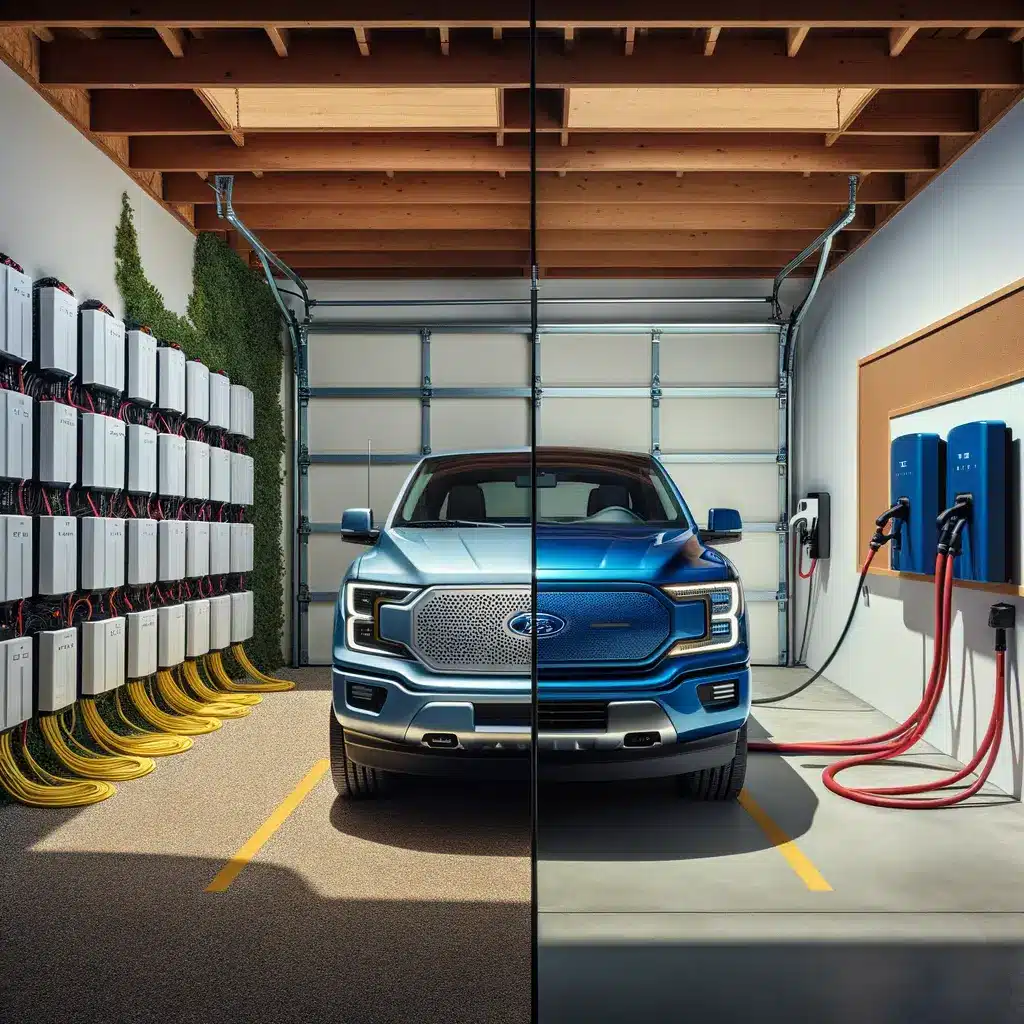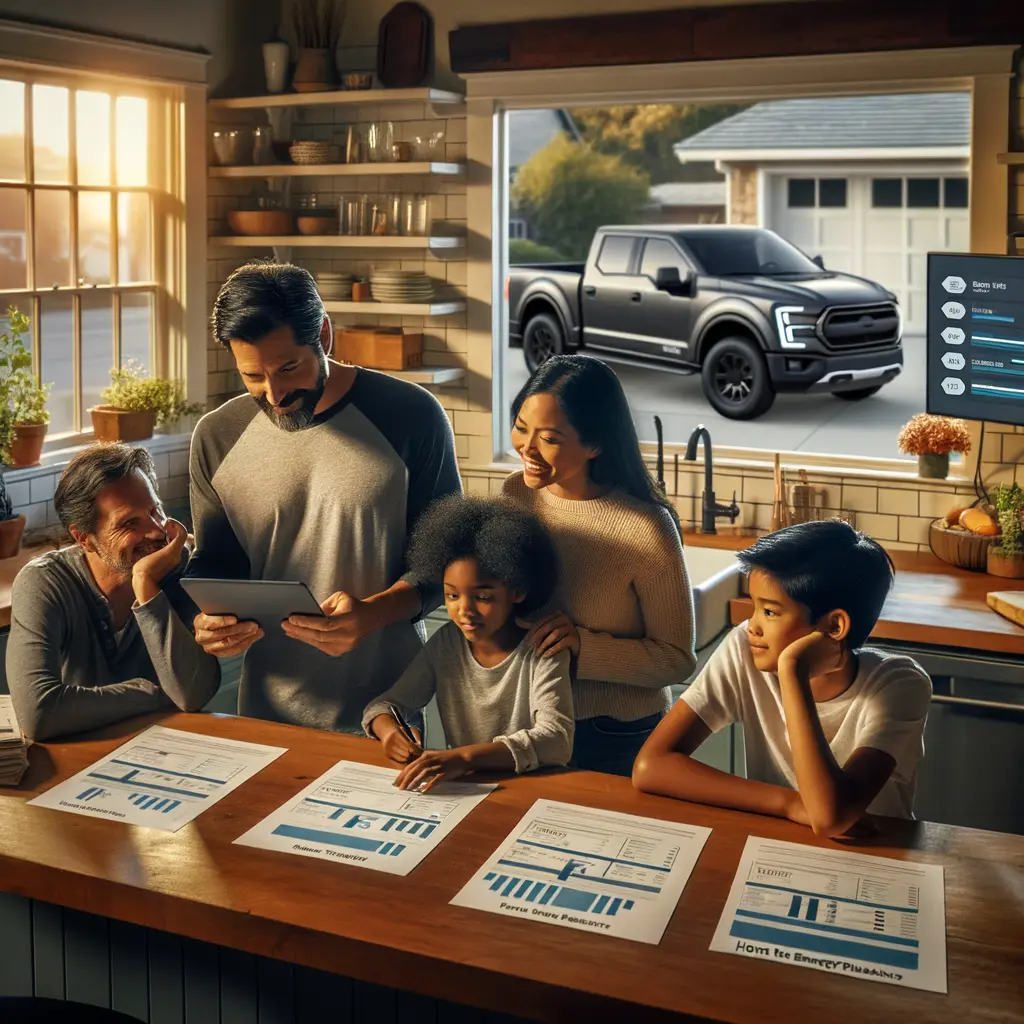Why Electric Pickup Trucks Are a Game-Changer for Home Energy
Electric pickup trucks are finally shaking up two of America’s favorite pastimes: driving and home improvement. Until recently, the idea that a vehicle could double as an energy storage system belonged to science fiction. Today, models such as the Ford F-150 Lightning and its rival, the Chevy Silverado EV, make it a driveway reality. What sets these electric trucks apart is their massive battery capacity—up to 123 kWh in the Lightning and 200 kWh in the larger-pack Silverado EV. To put that in perspective, a typical U.S. household consumes about 30 kWh of electricity per day. Pair that statistic with modern solar arrays or even low-cost off-peak charging plans, and you have the recipe for true electric truck home backup power that can last for days, not hours.
Beyond raw capacity, the underlying magic is vehicle to grid (V2G) or vehicle-to-home (V2H) technology, which allows bidirectional energy flow. Plug in your truck, and the same ports used for fast charging on a road trip can now keep your refrigerator, HVAC, and lights running during a grid outage. Internal combustion pickups can haul plenty of lumber, but they definitely can’t keep your freezer cold when the power company goes dark. That new capability is rapidly changing buyer calculations. Add current federal and state incentives, falling battery prices, and rising grid instability, and the value proposition of an electric pickup truck pivots from “nice to have” to “why wouldn’t you?” For more on choosing the right home charger, see our guide to Level 2 EV installations.

Ford F-150 Lightning: The Electric Truck That Powers Your Home
The Ford F-150 Lightning isn’t just a re-skinned gas truck with a battery; it’s a rolling 123 kWh power plant. Ford’s Intelligent Backup Power hardware lets homeowners route that energy straight into their breaker panel, automatically turning the pickup into a silent generator when an outage strikes. Because the primary keyword Ford F-150 Lightning is also America’s best-selling electric pickup truck to date, real-world data on its home-backup performance keeps piling up. Early adopters in hurricane-prone Florida have reported running critical loads for up to three days without rationing—even longer when supplemented with rooftop PV.
From a cost standpoint, nine Tesla Powerwalls would be required to equal the Lightning’s storage; that hardware alone exceeds truck MSRP before installation. With the Lightning you’re buying the battery, a capable workhorse, and 7,700 lbs of towing in one package. Bidirectional charging comes via the Ford Charge Station Pro (80 A) and Home Integration System, which licensed electricians can install in a day. Combine those components with utility plans offering $0.03 per kWh overnight rates, and the savings snowball. On weekends, fill the battery from your panels for “free miles,” then discharge at 5 kW to shave evening peaks. If you’re researching solar EV combos, check out our article on optimizing inverter sizing.

Chevy Silverado EV: 204 kWh of Mobile Energy on Four Wheels
While Ford grabbed headlines first, General Motors wasted no time counterpunching with the Chevy Silverado EV. Opt for the Max Range trim and you unlock a colossal 204 kWh battery—nearly seven times the capacity of the average stationary home storage system. That energy reservoir delivers an EPA-estimated 478 miles of driving or, more impressively for homeowners, over a week of backup power when paired with modest conservation. The truck’s Ultium platform features bidirectional capability out of the box, and GM has partnered with utilities to roll out vehicle to grid pilot programs in California, Texas, and Michigan.
Performance isn’t sacrificed for capacity. The Silverado EV cranks out 754 horsepower and 785 lb-ft of torque in Wide Open Watts mode, hustling the electric pickup truck from 0-60 mph in under 4.5 seconds—plenty of muscle for job-site duty or towing 12,500 lbs. Yet its secret superpower is energy arbitrage. Charge during overnight wind-power surpluses at pennies per kilowatt-hour, then let the truck’s PowerBase bidirectional system feed your household during expensive afternoon peaks. Fleet managers are already modeling five-figure annual savings per vehicle. For adventure seekers, the Trail Boss variant adds lifted suspension and all-terrain tires without sacrificing a 170 kWh pack. After this section you’ll find our embedded video review that breaks down real-world range tests.
How Vehicle to Grid (V2G) Turns Trucks Into Money-Saving Assets
Vehicle to grid is the technical bridge that lets the Ford F-150 Lightning, Chevy Silverado EV, and future electric pickup trucks both draw power from and send power back to the utility. The heart of V2G is a bidirectional inverter: AC flows into the battery for charging, then reverses direction to export DC-to-AC electricity when commanded by smart software.
Utilities love V2G because parked EVs act as a distributed battery network, shaving the notorious “duck curve” caused by midday solar oversupply and evening demand spikes. Drivers benefit through demand-response payouts, flat-rate bill credits, or dynamic rates that drop below two cents per kilowatt-hour during curtailment events. In pilot projects, Lightning owners in Texas earned up to $150 per month simply by enrolling their trucks in automated discharge cycles—without noticing any difference in daily driving.
From a resilience standpoint, V2G is a godsend. Whether it’s a blizzard knocking out transmission lines or rolling blackouts on a sweltering August afternoon, your driveway battery stands ready. Install a smart transfer switch, set discharge thresholds in the truck’s app, and you’ll still have plenty of range for the morning commute. Looking ahead, Ford, GM, and Tesla are pushing an ISO-15118 communication standard, which should make future charger installs as plug-and-play as Wi-Fi routers. For deeper tech specs, explore our piece on bidirectional inverters vs. micro-inverters.

Cost Analysis: Batteries vs. Trucks vs. Traditional Generators
Sticker shock often blinds shoppers to the bigger picture. Let’s run the math. A single Tesla Powerwall 3 lists at roughly $10,000 installed for 13.5 kWh of usable storage. Matching the Ford F-150 Lightning’s 123 kWh would require nine units, pushing costs north of $90,000. Meanwhile, the Lightning’s entry trim starts at $63,000—while also giving you transportation, 2,235 lbs of payload, and over-the-air updates. The Chevy Silverado EV’s 204 kWh pack would equate to roughly $150,000 in stationary storage before labor, yet its Max Range trim undercuts that by half.
Traditional generators appear cheaper up front—about $7,500 for an 18 kW whole-home unit—but they guzzle propane or diesel at rates that make long outages expensive and emit more CO₂ in a weekend than an electric truck does in a year of charging from a typical U.S. grid mix. Add the annual maintenance, noise, and volatile fuel prices, and lifetime costs tilt decisively toward electric truck home backup power.
Because both Ford and GM integrate the inverter into the vehicle, installation runs $3,500-$5,000 for a transfer switch and upgraded panel—still far below the cost of stacking multiple stationary batteries. Factor in federal clean-energy tax credits on bidirectional hardware, plus state rebates from programs like California’s SGIP, and ROI often lands under seven years. Curious about long-term battery degradation? See our post comparing cell chemistries in modern EVs.

The Road Ahead: Preparing Your Home for an Electric Truck Future
Electric pickup trucks are rapidly evolving from niche toys to integral components of modern home energy systems. The Ford F-150 Lightning and Chevy Silverado EV prove that a vehicle parked 90 percent of the time can pay rent by safeguarding your refrigerator, HVAC, and family comfort. Looking forward, every major automaker—from Ram to Rivian—has announced vehicle to grid-ready platforms, while utilities accelerate tariff structures that reward flexible demand.
Homeowners who adopt early will gain more than bragging rights. They’ll lock in resilience, slash utility bills, and hedge against rising gasoline costs—all with a single asset. Preparing is straightforward: consult a licensed electrician, verify panel capacity (200 A service is ideal), and select a bidirectional charger compatible with your chosen electric pickup truck. If solar is on your horizon, size the array to cover at least 120 percent of annual consumption to maximize V2G credits. And don’t forget future-proofing: conduit runs and breaker space cost pennies now compared to dollars later.
The primary keyword Ford F-150 Lightning headlines today’s conversation, but the underlying shift is bigger than one model. When your driveway becomes an energy hub, the line between transportation and infrastructure blurs—in the best possible way. Ready to take the next step? Review our checklist for Home Integration System rebates and explore community solar options that pair perfectly with bidirectional EVs.







